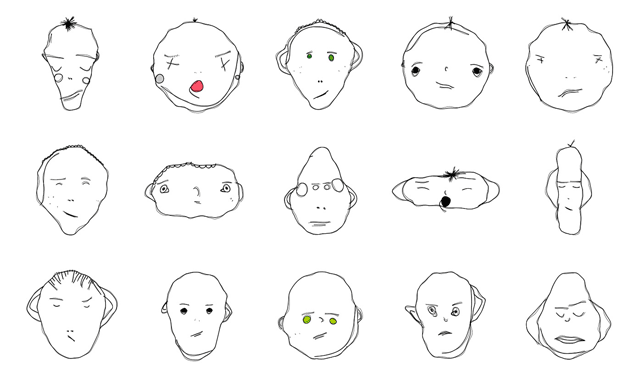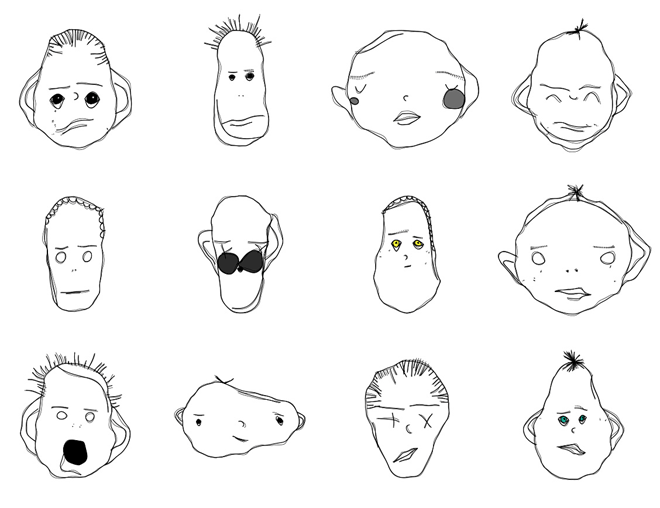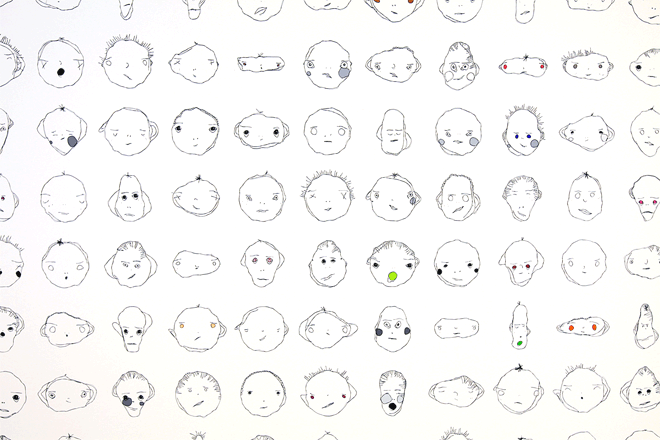Generate random people in PaperJS

Synthetic images usually look unnatural, not human, and a trained eye immediately distinguishes them from real ones. The Weird Faces Study project is an attempt to combine the traditional “human” drawing technique and computer algorithms. The result - generated computer faces, each of which is unique and looks like the original author's work.
The Weird Faces Study Face Generator is written in JavaScript using the PaperJS library as part of the PaperJS training course taught at the University of California, Los Angeles.
Actually, the algorithm for generating faces consists of 9 steps .
')
- Draw the shape of the face.
- Draw a fold inside the shape.
- Find the center of the figure, draw the nose.
- Draw the eyes based on the location of the nose and the radius so that they do not intersect.
- Draw eyebrows based on the location of the eyes and their radius.
- Draw a mouth based on the location of the eyes and nose so that they do not intersect.
- Draw cheeks, considering the shape of the face and the radius of the head.
- Draw the ears outside the face.
- Draw the hair outside the face.
As a result, the computer creates a minimal set of graphic elements that is recognized by the human brain as a face.
PaperJS is one of several existing drawing libraries on the web , along with Processing.js and Raphaël.
Perhaps, algorithms for generating unique faces may be useful in the future for automatic rendering of cartoons on automatically generated plots .



Source: https://habr.com/ru/post/176691/
All Articles